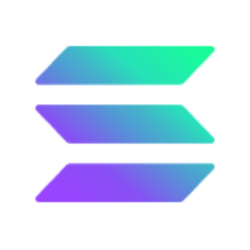-
Solana has emerged as a significant player in the tokenized asset market, ranking fourth among blockchains by market share and demonstrating impressive year-to-date growth.
-
The blockchain’s ability to support a diverse range of real-world asset (RWA) tokenization projects, from tokenized stocks to institutional funds, underscores its expanding role in the evolving crypto ecosystem.
-
Matthew Nay, research analyst at Messari, highlights Solana’s “high throughput, near-zero transaction costs, and robust developer ecosystem” as key drivers behind its growing appeal in the RWA space.
Solana’s tokenized assets surged 140.6% YTD, securing 3.9% of the RWA market and narrowing the gap with Ethereum and Aptos in the $25B+ tokenization sector.
Solana’s Rapid Growth in the Real-World Asset Tokenization Market
Solana’s tokenized asset market has witnessed a remarkable increase, crossing the $418 million mark and expanding by 140.6% year-to-date. This growth rate significantly outpaces the broader real-world asset tokenization market, which grew by 62.4% over the same period. The blockchain’s ability to facilitate a wide array of tokenized assets—including stocks, U.S. treasuries, and institutional investment funds—positions it as a versatile platform for RWA projects.
According to data from Messari and analytics platform RWA.xyz, Solana currently holds a 3.9% share of the global RWA tokenization market, placing it just behind Aptos, which commands 4%. Ethereum remains the dominant leader with 58.4%, followed by ZKSync Era at 17.2%. This competitive landscape reflects the dynamic nature of blockchain adoption in the tokenization sector.
Key Protocols Driving Solana’s RWA Ecosystem
The growth of Solana’s RWA market is largely attributed to major protocols such as Ondo and ONe. Ondo’s U.S. Dollar Yield Fund and ONe’s institutional fund collectively represent $277 million in tokenized assets on Solana. Ondo’s fund alone has generated $2.7 million in cross-chain trading volume within the last 24 hours, indicating strong liquidity and user engagement. These protocols contribute to Solana’s revenue stream, which totaled $3.9 million over the past 30 days, reflecting the blockchain’s increasing economic activity in the RWA space.
Expanding Market Cap and Competitive Dynamics in RWA Tokenization
The real-world asset tokenization market recently surpassed a $25 billion market capitalization, marking a significant milestone for this emerging sector. Over the past six months, the market has expanded by 62.4%, with a 6.3% increase in the last 30 days alone. This growth highlights the increasing adoption of tokenization technology by traditional financial institutions seeking faster settlements, enhanced liquidity, and broader accessibility.
Layer-1 blockchains like Aptos and Solana are actively competing for market share in this space. Aptos has experienced a 52.7% increase in RWA token value over the past month, while Solana’s tokenized assets grew by 14.6%. Ethereum, despite its dominant market share, recorded a more modest 3.6% growth in the same timeframe. These figures suggest a shifting landscape where emerging blockchains are gaining traction by offering scalable and cost-efficient solutions for tokenizing real-world assets.
Implications for Institutional Adoption and Future Trends
The rapid expansion of RWA tokenization on Solana and competing blockchains signals growing institutional interest in blockchain-based asset management. The ability to tokenize traditional financial instruments on-chain offers institutions enhanced transparency, reduced counterparty risk, and the potential for fractional ownership. As blockchain infrastructure continues to mature, these benefits are likely to drive further integration of tokenized assets into mainstream finance.
Moreover, Solana’s low transaction fees and high throughput make it an attractive option for projects requiring frequent and cost-effective asset transfers. This technical advantage, combined with a vibrant developer community, positions Solana well for sustained growth in the RWA sector.
Conclusion
Solana’s impressive growth in the tokenized asset market underscores its rising prominence among blockchains facilitating real-world asset tokenization. With a 140.6% year-to-date increase and a 3.9% market share, Solana is closing the gap with leading competitors like Aptos and Ethereum. The expanding ecosystem of RWA protocols on Solana, coupled with its technical strengths, points to a promising future for the blockchain in institutional asset tokenization. As the $25 billion RWA market continues to evolve, Solana’s role is set to become increasingly influential in shaping the intersection of traditional finance and blockchain technology.
